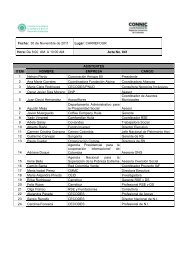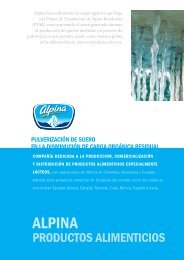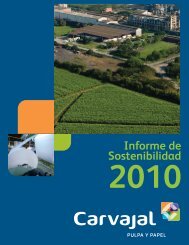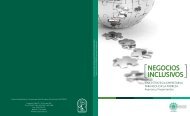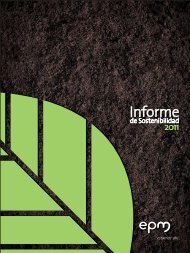Setting new standards - Friends Life
Setting new standards - Friends Life
Setting new standards - Friends Life
Create successful ePaper yourself
Turn your PDF publications into a flip-book with our unique Google optimized e-Paper software.
PARENT COMPANY ACCOUNTS<br />
ABBREVIATIONS AND DEFINITIONS<br />
Notes to the consolidated accounts continued<br />
1. Accounting policies continued<br />
(b) Fee and commission income and income from service activities<br />
Insurance and investment contract policyholders are charged for<br />
policy administration services, investment management services and<br />
for surrenders. Investment management services comprise primarily<br />
fees and charges from unit-linked investment contracts issued by the<br />
<strong>Life</strong> & Pensions business. Fees earned by the Asset Management<br />
business relate to the sale and management of retail investment<br />
products and from managing investments in the institutional market.<br />
These fees and charges are recognised as revenue in the accounting<br />
period in which the services are rendered.<br />
Front-end fees are charged to the policyholder at the inception of the<br />
contract. This is primarily used for single premium contracts. The<br />
consideration received is deferred as a liability and recognised over<br />
the expected term of the contract on a straight-line basis.<br />
Regular fees charged to the policyholder periodically (monthly,<br />
quarterly or annually), are recognised on a straight-line basis over the<br />
period in which the service is rendered.<br />
In respect of Asset Management a number of contracts have<br />
performance fees based on an agreed level of performance in a set<br />
time period. Performance fees are recognised when the quantum of<br />
the fee can be estimated reliably, which is when the performance<br />
period ends, when this occurs on or before the reporting date, or<br />
where there is a period of less than six months remaining to the end<br />
of the performance period, and there is evidence at the reporting date<br />
which suggests that the current performance will be sustainable.<br />
(c) Investment income<br />
All income received from investments is recognised in the income<br />
statement and includes dividends, interest, rental income, and gains<br />
and losses relating to investment properties, financial assets at fair<br />
value through the income statement and derivative financial instruments.<br />
Dividend income from listed and unlisted securities is recognised as<br />
revenue when the right to receive payment is established. For listed<br />
securities this is the date the security is listed as ex-dividend. For<br />
unlisted securities this is the due date of payment.<br />
Interest income is recognised in the income statement as it accrues,<br />
taking into account the effective yield of the asset or an applicable<br />
floating rate. Interest income includes the amortisation of any<br />
discount or premium.<br />
Rental income from investment properties under operating leases is<br />
recognised in the income statement on a straight-line basis over the<br />
term of the lease. Lease incentives received are recognised in the<br />
income statement as an integral part of the total lease income.<br />
1.3.6 Expense recognition<br />
(a) Claims and benefits paid<br />
Insurance claims reflect the cost of all claims incurred during the<br />
year, including claims handling costs. Death claims and surrenders<br />
are recorded on the basis of notifications received. Maturities and<br />
annuity payments are recorded when due. Claims and benefits<br />
recorded are accrued to the policyholder and included within<br />
insurance and investment contracts liabilities.<br />
Claims handling costs include internal and external costs incurred in<br />
connection with the negotiation and settlement of claims. Internal<br />
costs include all direct expenses of the claims department and any<br />
general administrative costs directly attributable to the claims function.<br />
Reinsurance recoveries are accounted for in the same period as the<br />
related claim.<br />
(b) Finance costs<br />
Finance costs are recognised as an expense in the period in which<br />
they are incurred.<br />
(c) Operating lease payments<br />
Payments made under operating leases are recognised in the<br />
income statement on a straight-line basis over the term of the lease.<br />
Lease incentives paid are recognised in the income statement as an<br />
integral part of the total lease expense.<br />
(d) Investment properties related expenses<br />
Expenses with regards to investment properties are treated as<br />
administrative expenses and are recognised when incurred.<br />
1.3.7 Impairment<br />
Assets are reviewed at each reporting date to assess whether there<br />
are any circumstances that might indicate that they are impaired. If<br />
such circumstances exist, impairment testing is performed and any<br />
resulting impairment losses are charged to the income statement. The<br />
carrying value is adjusted to the recoverable amount. Goodwill is tested<br />
annually for impairment or more frequently if events or changes in<br />
circumstances indicate that the carrying value may be impaired.<br />
Impairment is determined by assessing the recoverable amount of<br />
the asset, or in respect of goodwill, the cash generating unit to which<br />
the goodwill relates. The recoverable amount is the higher of the<br />
asset’s fair value less costs to sell and value in use.<br />
Each cash generating unit to which goodwill is allocated represents<br />
the lowest level within the Group at which the goodwill is monitored<br />
for internal management purposes and is not larger than any of the<br />
Group’s primary or secondary segments used for segment reporting.<br />
1.3.8 Intangible assets<br />
(a) Goodwill<br />
Goodwill arising on business combinations is the future economic<br />
benefit arising from assets that are not capable of being individually<br />
identified and separately recognised.<br />
(b) Investment management contracts<br />
Investment management contracts acquired separately are<br />
measured on initial recognition at cost. The cost of intangible assets<br />
acquired in a business combination is the fair value as at the date of<br />
acquisition. Following initial recognition intangible assets are carried<br />
at cost less accumulated amortisation and any accumulated<br />
impairment losses. The useful lives of investment management<br />
<strong>Friends</strong> Provident Annual Report & Accounts 2006 77








